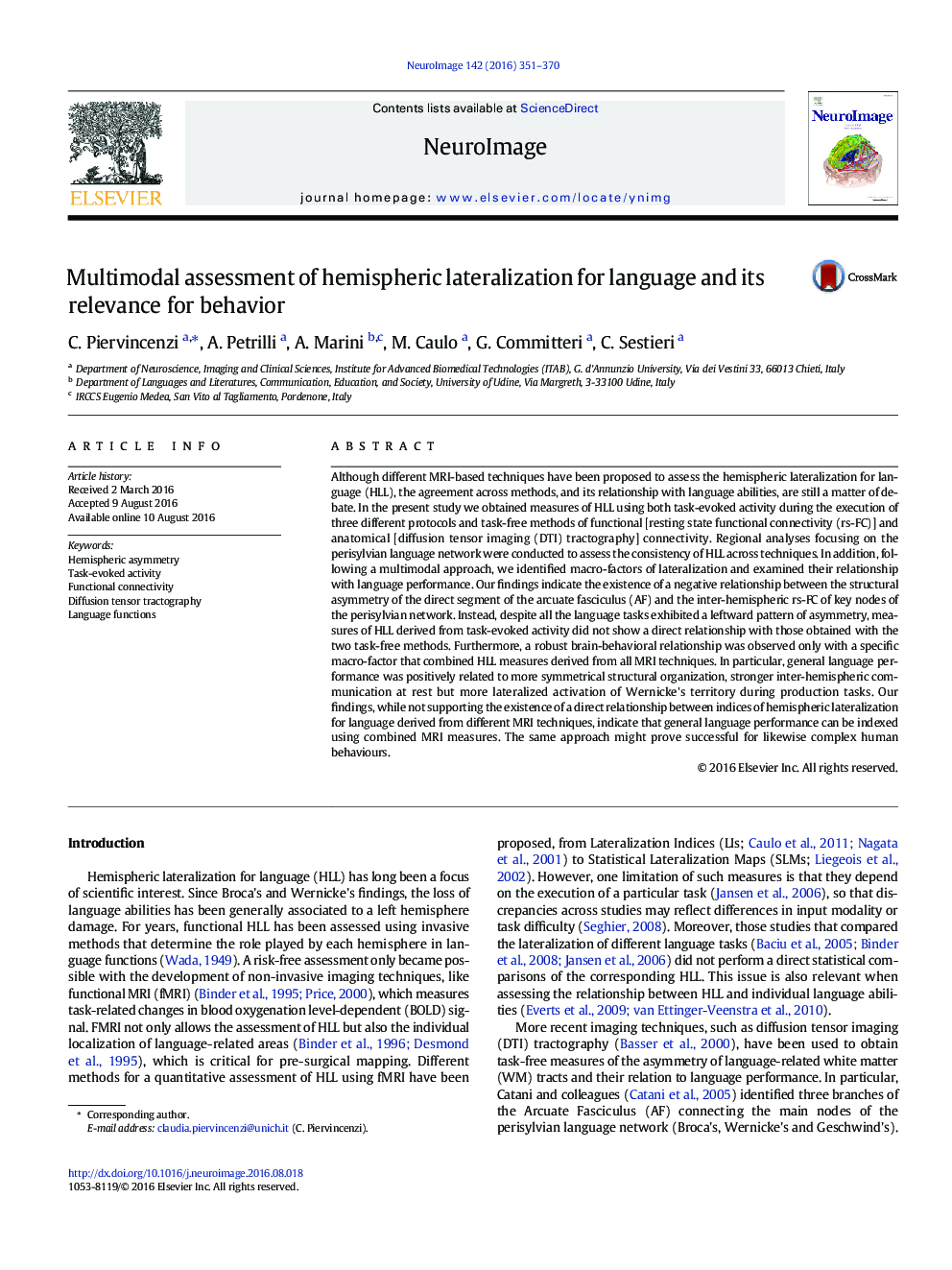| Article ID | Journal | Published Year | Pages | File Type |
|---|---|---|---|---|
| 5631443 | NeuroImage | 2016 | 20 Pages |
â¢Statistical lateralization maps show solid leftward asymmetry across language tasks.â¢Structural asymmetry is negatively correlated with inter-hemispheric fc.â¢Language performance best correlate with a multi-modal mri measure of lateralization.â¢Extreme structural/functional asymmetry at rest are not advantageous for performance.â¢Strong asymmetry appears advantageous for behavior only during task-evoked activity.
Although different MRI-based techniques have been proposed to assess the hemispheric lateralization for language (HLL), the agreement across methods, and its relationship with language abilities, are still a matter of debate. In the present study we obtained measures of HLL using both task-evoked activity during the execution of three different protocols and task-free methods of functional [resting state functional connectivity (rs-FC)] and anatomical [diffusion tensor imaging (DTI) tractography] connectivity. Regional analyses focusing on the perisylvian language network were conducted to assess the consistency of HLL across techniques. In addition, following a multimodal approach, we identified macro-factors of lateralization and examined their relationship with language performance. Our findings indicate the existence of a negative relationship between the structural asymmetry of the direct segment of the arcuate fasciculus (AF) and the inter-hemispheric rs-FC of key nodes of the perisylvian network. Instead, despite all the language tasks exhibited a leftward pattern of asymmetry, measures of HLL derived from task-evoked activity did not show a direct relationship with those obtained with the two task-free methods. Furthermore, a robust brain-behavioral relationship was observed only with a specific macro-factor that combined HLL measures derived from all MRI techniques. In particular, general language performance was positively related to more symmetrical structural organization, stronger inter-hemispheric communication at rest but more lateralized activation of Wernicke's territory during production tasks. Our findings, while not supporting the existence of a direct relationship between indices of hemispheric lateralization for language derived from different MRI techniques, indicate that general language performance can be indexed using combined MRI measures. The same approach might prove successful for likewise complex human behaviours.
